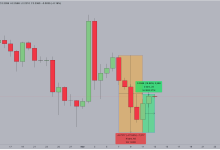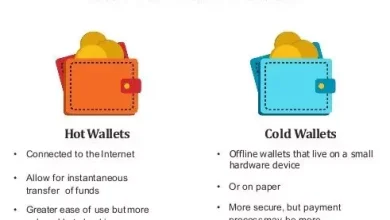Top 10 Promising Altcoins to Watch This Year

The cryptocurrency market has evolved far beyond BTC and ETH, giving rise to thousands of altcoins—digital assets that aim to innovate, improve, or specialize in ways that the original cryptocurrencies cannot. Each year, new altcoins emerge with unique utilities, advanced technologies, and strong communities driving adoption.
While many coins fade away due to volatility and lack of real-world use, several projects continue to prove their worth. Below are the top 10 altcoins to watch this year, selected for their technological potential, real-world applications, and investor interest.
1. ETH (ETH) — Still the DeFi and Smart Contract King
Despite being the second-largest cryptocurrency, ETH remains the backbone of decentralized applications (dApps) and smart contracts. The network’s upgrade to Proof of Stake (ETH 2.0) significantly reduced energy usage and improved scalability.
With thousands of projects built on its network, ETH continues to lead in DeFi, NFTs, and Web3 innovation. Its dominance and developer community make ETH a must-watch for both long-term investors and blockchain enthusiasts.
2. Solana (SOL) — The High-Speed Contender
Solana is renowned for its lightning-fast transaction speeds and minimal fees. It’s a preferred choice for developers creating NFT marketplaces, DeFi apps, and scalable dApps.
Despite experiencing a few network outages, Solana’s ecosystem has seen major growth and institutional interest. With continuous improvements and an expanding user base, SOL remains one of the strongest competitors to ETH.
3. Polygon (MATIC) — ETH’s Scaling Solution
Polygon addresses ETH’s scalability problem through its layer-2 sidechains, offering faster and cheaper transactions. Many major DeFi projects and NFT platforms use Polygon to improve user experience.
The network has also partnered with big brands such as Starbucks, Disney, and Reddit, helping bridge blockchain technology with mainstream adoption. As ETH grows, Polygon’s role as a scaling companion becomes increasingly vital.
4. Cardano (ADA) — The Research-Driven Blockchain
Cardano distinguishes itself through a peer-reviewed development process emphasizing scalability, security, and sustainability. Founded by Charles Hoskinson (ETH co-founder), Cardano continues to expand its ecosystem through smart contracts, NFTs, and DeFi applications.
Real-world implementations in education, agriculture, and digital identity systems make Cardano a blockchain with practical use beyond speculation.
5. Avalanche (AVAX) — Speed, Scalability, and Interoperability
Avalanche stands out for its near-instant transaction finality and energy-efficient consensus mechanism. Supporting multiple interoperable blockchains, it provides developers with flexibility and scalability.
With major enterprise collaborations and integrations with top DeFi protocols, Avalanche is quickly becoming a preferred network for developers seeking performance and flexibility.
6. Chainlink (LINK) — Connecting Blockchains to Real-World Data
Chainlink is the leader in decentralized oracles, which provide smart contracts with real-world data such as price feeds, weather updates, and event outcomes.
As the DeFi and Web3 space grows, the demand for secure data feeds also increases. Chainlink’s partnerships with major protocols and global institutions make LINK an essential asset in the blockchain ecosystem.
7. Arbitrum (ARB) — Layer-2 Efficiency for ETH
Arbitrum enhances ETH’s performance by processing transactions off-chain and settling them securely on the main ETH network. This layer-2 scaling solution offers faster speeds and lower costs.
Its rapid ecosystem growth, developer adoption, and institutional attention make ARB a standout among scalability-focused altcoins.
8. Aptos (APT) — The Next-Generation Layer-1 Blockchain
Developed by former Meta (Facebook) engineers, Aptos uses a parallel execution engine that allows thousands of transactions per second. Its design emphasizes safety, speed, and developer experience.
Backed by major venture firms such as a16z and Binance Labs, Aptos has strong financial support and growing community momentum, positioning it as a next-gen blockchain for mass adoption.
9. Cosmos (ATOM) — The Internet of Blockchains
Cosmos aims to create an interconnected blockchain network through its Inter-Blockchain Communication (IBC) protocol. This enables different chains to exchange data and assets seamlessly.
ATOM’s role in governance and staking gives users both influence and rewards. As blockchain interoperability becomes more crucial, Cosmos is set to play a key role in building a unified crypto ecosystem.
10. Render Token (RNDR) — Powering Decentralized GPU Rendering
Render Token introduces blockchain to the world of digital creation and rendering. via decentralizing GPU power, RNDR allows users to share computing resources for AI, 3D rendering, and metaverse projects.
Artists and developers can access affordable rendering power while earning tokens, making RNDR a bridge between creative industries and blockchain utility.
Final Thoughts — Navigating the Altcoin Landscape
The altcoin market represents innovation, opportunity, and risk. The coins highlighted above combine technological strength, community support, and real-world value—the three pillars of sustainable success in crypto.
While these projects hold promise, investors should remember that the crypto market is volatile. Research, diversification, and long-term perspective remain essential for success.
As the digital asset space matures, altcoins that deliver real utility and solve genuine problems will lead the next wave of blockchain adoption. For forward-thinking investors, this year may be the perfect time to watch — or invest in — the next big crypto breakthrough.







